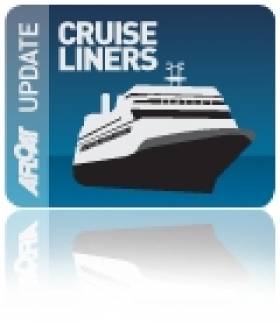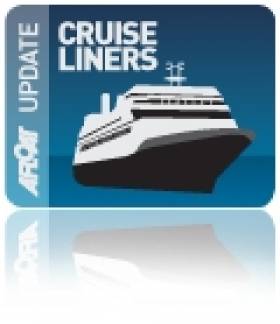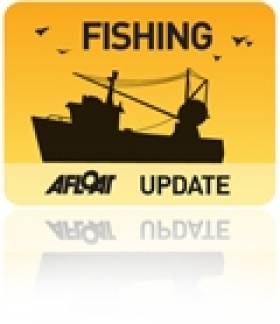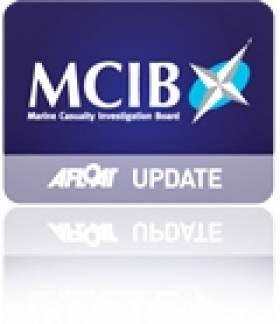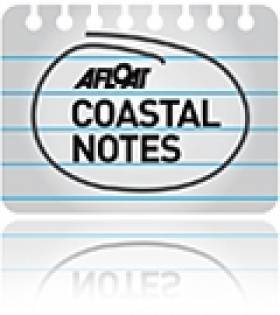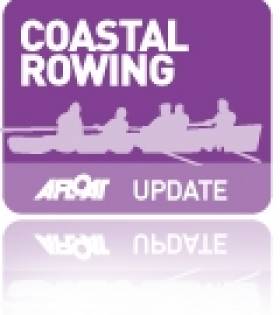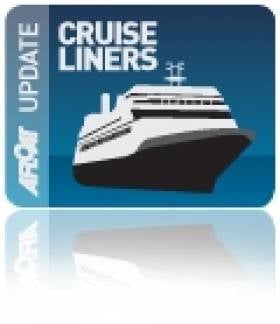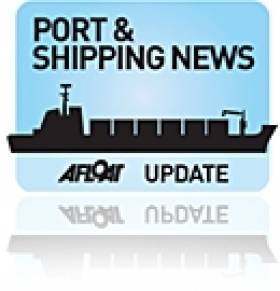Displaying items by tag: Bantry Bay
Bantry Bay Cruise Scene: A Setting for A Sapphire
#BantryCruiseships – As previously reported, Serenissima (1960/2,598grt) a 110 passenger exploration cruiseship which called to Glengariff mid-week was yesterday followed by Saga Sapphire to the secluded west Cork anchorage, writes Jehan Ashmore.
Operated by Serenissima Cruises, she reflects a different era with classically designed hull forms and overall appearance of an era that remains with the Hurtigruten final traditional ship, Lofoten which celebrates her 50th anniversary this year.
Saga Sapphire (1981/37,301grt) with a 710 passenger capacity is easily the largest cruise ship caller this season to call to Bantry Bay. Operated by Saga Cruises, she had sailed from Killybegs, having also visited Belfast and Dublin.
She is the third caller this season out a total of six to visit Bantry Bay Port which at the turn of this year, saw responsibility for the control of Bantry Bay Harbour transferred to the Port of Cork Company.
The transfer order was made by Minister for Transport, Leo Varadkar TD, and for the purposes of managing operations in Bantry Bay, the Port of Cork Company established a subsidiary company, Bantry Bay Port Company Limited.
To date, Le Boreal and Minerva have called in late May opening the cruise ship season which will also see Amadea call in August make a repeat visit in October to mark the end of the season.
As for the interim fifth visitor to call to Glengariff, Club Med 2 is to make an appearance in September, her 'tallship' presence will further add to the allure of cruising is such a scenic setting.
As there are no berthing facilities to cater for cruiseships alongside charming Glengariff, this all lends to the experience of anchoring in the surrounds of beautiful Bantry Bay.
Nearby is Garnish Island, where many visitors take the small ferry service to the island, where the world renowned gardens are laid out with specimen plants that are rare in this climate.
Cruise Tours to be Promoted by West Cork Communities
#CruisePromotion – The Southern Star writes, that communities in West Cork have been asked to play an active role in attracting the cruise ship operators to the region.
Five key people involved in the initiative gave a concise presentation at the Celtic Ross Hotel last Thursday and explained how the proposal could be of commercial benefit to the region as a whole.
The chairman of the Western Committee of Cork County Council, Mary Hegarty, explained how traditionally Glengarriff does well out of visiting cruise ships coming into Bantry Bay.
Historically, she said, the largest of these came in 1951, with a cruise ship that was carrying 1,000 passengers and 600 members of staff. However, today some of the very big cruise liners docking in places like Cobh can carry up to 4,000 passengers.
She said the market that West Cork needs to concentrate on are the type of cruises that can take 12 people on a guest liner, 50 people on a touring holiday, or 130 people who are interested in adventure activities and outdoor pursuits.
For much more on this story, click HERE for the report.
Fish Farm Delays Not 'Inexplicable' Say Environmental Campaigners
#FISHING - Environmental campaigners have lambasted the IFA's claims of an "inexplicable delay" in the State's processing of licence applications for fish farms.
In a letter to The Irish Times yesterday, Tony Lowes of Friends of the Irish Environment says that the delay – to allow for proper environmental studies to be conducted – "has been explained again and again" by Minister for the Marine Simon Coveney.
He was responding to a letter last Friday by Richie Flynn of IFA Aquaculture, who highlighted the "suffering" of coastal communities as a result of processes that "hamper development and delay investment in the hundreds of companies involved in farming salmon, oysters, mussels, trout and other species".
Lowes writes in counter that salmon farming "is a highly polluting industry", and that discharge of nitrogen and phosphorous from aquaculture facilities "can fuel toxic algae blooms, which have cost the shellfish industry dear".
He claims that the proposed salmon farm in Bantry Bay in West Cork would have a nitrogen and phosphorous discharge "equivalent to the sewage of a town 10 times the size of Bantry".
Lowes also alleges that the deep-sea "super salmon" farm in Galway Bay - the licence application for which is undergoing statutory consultation till 2 October - would produce the equivalent effluent of a city more than double the size of Galway.
In addition, he makes reference to the threat to native salmon in Irish rivers through sea lice infestations.
"The EU habitats directive requires baseline studies and environmental impact statements," writes Lowes. "Licensees can be granted only if the project will not have adverse impacts on protected species and habitats."
#MCIB REPORT - The inquiry into the drowning of three men on a fishing trip off West Cork in August 2010 has concluded that their deaths could have been avoided had they been wearing lifejackets.
Wolfgang 'Mike' Schmidt (70), Richard Harmon (69) and Wolfgang Schroder (62) died near Adrigole Harbour in Bantry Bay on 16 August 2010 after they entered the water to evade a fire that broke out on board Schmidt’s motor cruiser Castaway. A fourth man, Ed Dziato (47), survived the incident.
As reported last year on Afloat.ie, the coroner returned verdicts of accidental death due to drowning in all three cases. The inquest also heard that the cause of the fire was likely due to problems with electrical wiring on the boat.
Shipwright John Murphy, who had previously undertaken repairs on the Castaway, told the inquest that the wiring was in an untidy state, which was confirmed by Dziato.
The wiring was also reportedly connected directly to the battery without an isolation switch or fuse board, which compounded the problem when fire broke out.
All four men on board abandoned the boat without portable flotation devices, as these had been stowed forward of the wheelhouse which was quickly engulfed by the fire. An inflatable liferaft and two lifebuoys were also stowed in the same area.
The official report into the incident by the Marine Casualty Investigation Board (MCIB) declared its opinion "that if all persons on board the craft had being wearing lifejackets or PFD’s at the time of entering the water, the water temperature was such that the outcome of this particular casualty would have been significantly different."
The full report is available to download as a PDF from the MCIB website HERE.
Meeting for Bantry Bay Fish Farm Opponents Tonight
#COASTAL NOTES - Bantry Bay has reached its capacity for salmon farming, says the committee formed to oppose a proposed new facility at Shot Head.
Save Bantry Bay has called a public meeting for supporters tonight (24 March) at Eccles Hotel in Glengarrif, Co Cork, starting at 8.15pm - where chairman Kieran O'Shea will give a presentation on the group's "wide-ranging objections", as The Fish Site reports.
Minister for the Marine Simon Coveney is currently considering the licence application for Marine Harvet's proposed salmon farm at Shot Head in Adrigole.
Concerns among the committee's members include the potential spoiling of the area's natural beauty having a knock-on effect on tourism, and the environmental consequences of algae blooms from nitrogen and phosphorous waste.
Local fisherman fear that a fish farm of more than 100 acres would see the closing off of part of an "important ground for shrimp and prawn".
Possible infection of wild salmon in local river systems by sea lice from farmed salmon is also an issue, with the Environmental Impact Statement for Shot Head highlighting an outbreak of lice at Marine Harvest's facility in Roancarrig two years ago.
The Fish Site has more on the story HERE.
- Coastal Notes
- Fishing
- Bantry Bay
- Co Cork
- fish farm
- salmon farm
- Shot Head
- Adrigole
- Glengarrif
- Eccles Hotel
- Save Bantry Bay
- Minister for the Marine
- Simon Coveney
- Marine Harvest
- tourism
- environment
- algae blooms
- nitrogen
- phosphorous
- waste
- shrimp
- prawn
- infection
- Wild Salmon
- sea lice
- environmental impact statement
- Roancarrigh
Bantry 2012 Launches 'Seamanship Challenge' this Month
#BANTRY2012 – A spectacular display of seamanship for Cork this Summer will be officially launched by Minister for the Marine Simon Coveney TD on January 27th when details of the Bantry 2012 Challenge are revealed. As well as a top sporting story organisers say it's also a tale of how tight knit coastal communities across the world have forged strong interantional links thanks to an initial idea in West Cork.
300 competitors from 16 nations are expected in July when replicas of the Bantry Bay longboat, the oldest surviving vessel in the French navy are raced under sail and oar.
The international crews will take part in a week long event in ten events both on and off the water. The prestigious event for the West cork venue is known as the 'Atlantic Challenge Bantry Bay Gig World Championships'.
Two years ago, as previously reported in Afloat, the Bantry Bay crew, soared in second place, while representing Ireland in the Atlantic Rowing Challenge in Midland Canada.
Competing on Lake Huron, one of the five Great Lakes the Bantry Bay Crew displayed huge amounts of physical and mental strength as they accomplished first place in their first three races.
The Atlantic Challenge is held every other year and sponsors a friendly contest of seamanship in Bantry Bay gigs. Founded by an American native Lance Lee, the Atlantic Challenge aims to build trust among nations and form a community of youth and adults from many countries, while also encouraging the practice of traditional maritime skills.
The boats measure almost 40-foot in length and hold 13 crew. Each boat uses a mainsail, foresail and mizzen.
The competition starts in Bantry on July 21st.
German Cruise-Goers On Anchorage Call to Glengariff
At 192m in length, the 600-passenger capacity cruiseship is operated by Pheonix Reisen. The German based travel agency also runs fleetmates Albratross and Artania. The later Finish built vessel was best known as Princess Cruises Royal Princess, when launched by the late Diana, Princess of Wales in 1984.
Apart from the handful of cruiseships that call, Bantry Bay is otherwise used by oil tankers bringing supplies to the Whiddy Island Oil Terminal. The terminal consists of an offshore single point mooring, tanker Jetty, and an onshore tank farm. The bay runs some 35kms long and is 10km wide at its broadest at the entrance and steadily narrows to 3-4kms at its head. In addition the bay is largest of the main inlets in the south-west.
Glengariff in recent years has also welcomed another German operator, Peter Deilmann's Deutschland (1988/22,496grt) and the UK based Cruise & Maritime Voyages Marco Polo (1966/20,080grt). To read more on this vessel which regularly calls to Irish ports click HERE.
French Navy to Visit Dublin's St. Patrick's Festival
CMT Cassiopée is a 'Tripartite' class minehunter built for the navies of France, Belgium and The Netherlands. The class were conceived in the 1970's and built during the following decade. The French built the mine-hunting equipment, the Belgians provided the electronics and the Dutch constructed the propulsion unit.
Displacing 615 tonnes, Cassiopée (see photo) was built by the Direction des Constructions Navales (DCN) shipyard in Lorient and entered service in 1984. The 51.5m minehunter has a crew of 49. Over the years several of the Tripartite class were sold to the navies of Bulgaria, Indonesia, Latvia and Pakistan.
In January 2009 the Cassiopée was joined by the L.E. Emer (P21) in Bantry Bay to commemmorate the 30th anniversary of the Whiddy Island Oil Refinery disaster and the sinking of the French supertanker the Bételgeuse.
Like the Cassiopée the minehunter BRS Altaïr (M771) was also built in 1984 but at the Chantier (Socarenam) shipyard at Boulogne-sur-Mer. At 28m long the craft (photo) is one of the three Antar class which has a 250 tonnes displacement and a crew of 23.
The French Naval call to the capital was to coincide with a visiting task force group from the German Navy. The task force of two frigates and a support ship were due to visit at the weekend but this was cancelled due to humanitarian relief operations off Libya. To read more about this and the task force vessels click here.



























